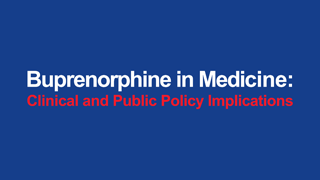Use of sublingual methadone for treating pain of chemotherapy-induced oral mucositis
DOI:
https://doi.org/10.5055/jom.2010.0007Keywords:
mucositis, methodone, sublingual, esophageal, cancerAbstract
Chemotherapy-induced and radiation-induced mucositis is a debilitating and often painful condition resulting in an inability to swallow, and thus inability to maintain adequate quality of life and overall functioning. To date, attempts on palliation of mucositis-related pain have primarily used topical anesthetic solutions and intravenous opioids; these approaches have achieved only limited success, particularly in oncology patients. The authors present a novel case of mucositis-related pain that is effectively treated with sublingual methadone. Sublingual methadone is an alternative to standard treatment options for mucositis-related pain and has unique pharmacokinetic and pharmacodynamic properties that make methadone a suitable agent for this pathology. These properties are addressed and discussed, as is the need for additional study to better understand the potential benefits, burdens, and risks that may be associated with this formulation of methadone when treating chemotherapy-induced and/or radiation therapy-induced mucositis in patients with cancer.References
Sonis ST, Elting LS, Keefe D, et al.: Perspectives on cancer therapy-induced mucosal injury: Pathogenesis, measurement, epidemiology, and consequences for patients. Cancer. 2004; 100(Suppl): 1995-2025.
Rubenstein EB, Schubert M: Clinical practice guidelines for the prevention and treatment of cancer therapy-induced oral and gastrointestinal mucositis. Cancer. 2004; 100(Suppl): 2026-2046.
Gorman AL, Elliott KJ, Inturrisi CE: The d- and l-isomers of methadone bind to the non-competitive site on the N-methyl-Daspartate (NMDA) receptor in rat forebrain and spinal cord. Neurosci Lett. 1997; 223: 5-8.
Codd EE, Shank RP, Schupsky JJ, et al.: Serotonin and norepinephrine uptake inhibiting activity of centrally acting analgesics: Structural determinations and role in anticociception. J Pharmacol Exp Ther. 1995; 274: 1263-1270.
Ferrari A, Coccia CP, Bertolini A, et al.: Methadone-metabolism, pharmacokinetics and interactions. Pharmacol Res. 2004: 551-559.
Hagen NA, Fisher K, Stiles C: Sublingual methadone for the management of cancer-related breakthrough pain: A pilot study. J Palliat Med. 2007; 10(2): 331-337.
Gourlay GK, Cherry DA, Cousins MJ: A Comparative study of the efficacy and pharmacokinetics of oral methadone and morphine in the treatment of severe pain in patients with cancer. Pain. 1986; 25(3): 297-312.
Dolophine® Hydrochloride (Methadone Hydrochloride Tablets) [Package insert]. Columbus, OH: Roxane Laboratories, Inc.
Weinberg DS, Inturrisi CE, Reidenberg B: Sublingual absorption of selected opioid agonists. Clin Pharmacol Ther. 1988; 44(3): 335-342.
Downloads
Published
How to Cite
Issue
Section
License
Copyright 2005-2025, Weston Medical Publishing, LLC and Journal of Opioid Management. All Rights Reserved.










